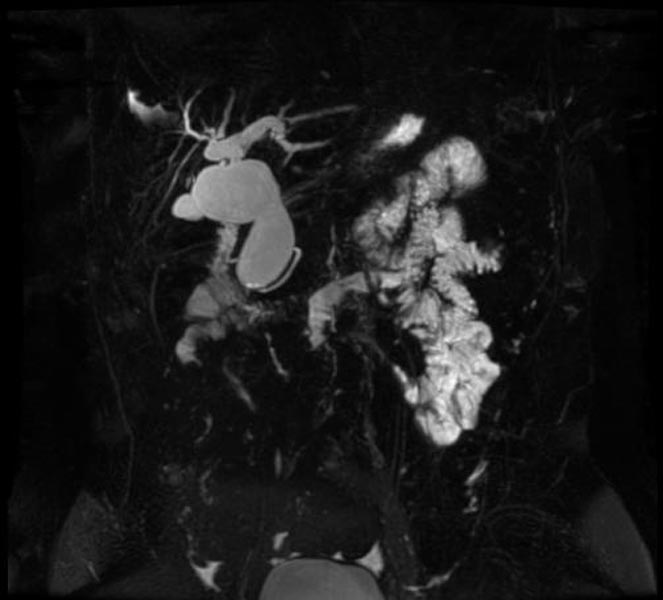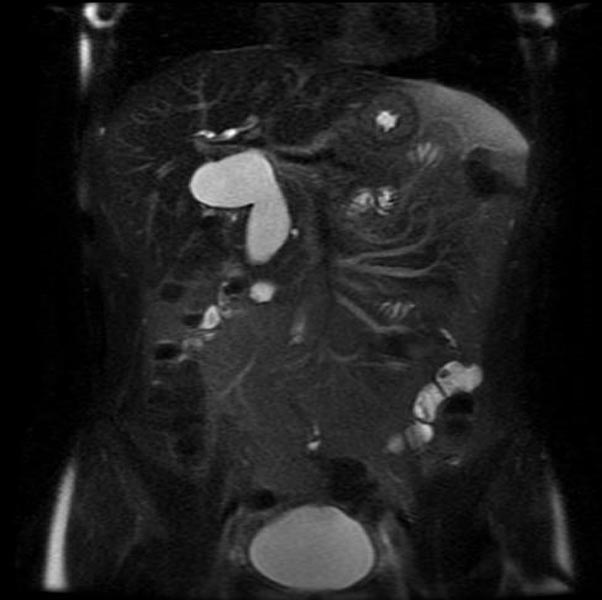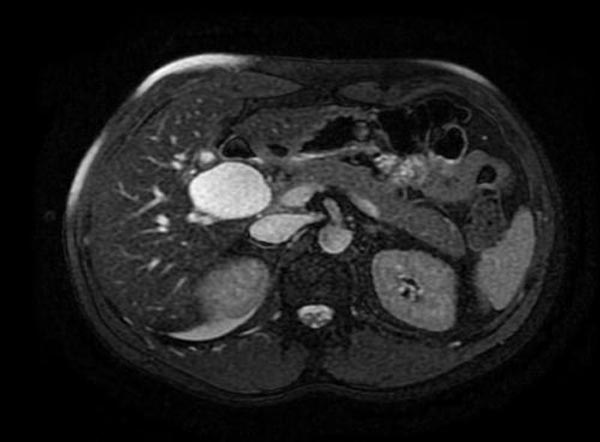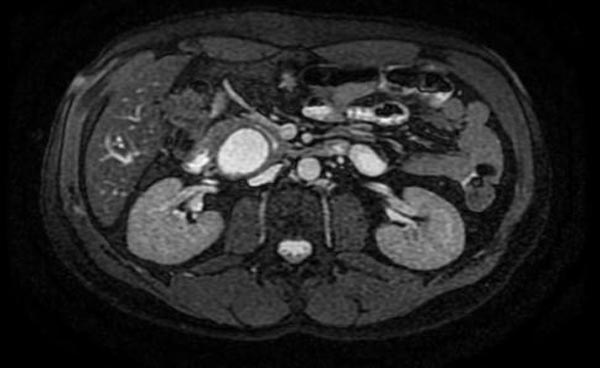Bile duct cyst
| Bile duct cyst | |
 | |
|---|---|
| MRCP: Type 4 bile duct cyst. Image courtesy of RadsWiki |
|
WikiDoc Resources for Bile duct cyst |
|
Articles |
|---|
|
Most recent articles on Bile duct cyst Most cited articles on Bile duct cyst |
|
Media |
|
Powerpoint slides on Bile duct cyst |
|
Evidence Based Medicine |
|
Clinical Trials |
|
Ongoing Trials on Bile duct cyst at Clinical Trials.gov Trial results on Bile duct cyst Clinical Trials on Bile duct cyst at Google
|
|
Guidelines / Policies / Govt |
|
US National Guidelines Clearinghouse on Bile duct cyst NICE Guidance on Bile duct cyst
|
|
Books |
|
News |
|
Commentary |
|
Definitions |
|
Patient Resources / Community |
|
Patient resources on Bile duct cyst Discussion groups on Bile duct cyst Patient Handouts on Bile duct cyst Directions to Hospitals Treating Bile duct cyst Risk calculators and risk factors for Bile duct cyst
|
|
Healthcare Provider Resources |
|
Causes & Risk Factors for Bile duct cyst |
|
Continuing Medical Education (CME) |
|
International |
|
|
|
Business |
|
Experimental / Informatics |
Please Take Over This Page and Apply to be Editor-In-Chief for this topic: There can be one or more than one Editor-In-Chief. You may also apply to be an Associate Editor-In-Chief of one of the subtopics below. Please mail us [1] to indicate your interest in serving either as an Editor-In-Chief of the entire topic or as an Associate Editor-In-Chief for a subtopic. Please be sure to attach your CV and or biographical sketch.
Overview
Bile duct cysts are congenital conditions associated with benign cystic dilatation of bile ducts. They are uncommon in western countries[1] [2] but not as rare in East Asian nations like Japan and China.
Classification
According to the Todani system, there are five types of bile duct cysts.[3].
Type 1: Choledochal Cyst
- Account for 80% to 90% of all bile duct cysts
- Characterized by fusiform dilation of the extrahepatic bile duct
- Theorized that choledochal cysts form as the result of reflux of pancreatic secretions into the bile duct via anomalous pancreaticobiliary junction.
- Cyst should be resected completely to prevent associated complications (i.e. ascending cholangitis and malignant transformation).
Type 2: Diverticulum
- Accounts for 3% of all bile duct cysts
- Represents a true diverticulum.
- Saccular outpouchings arising from the supraduodenal extrahepatic bile duct or the intrahepatic bile ducts.
Type 3: Choledochocele
- Accounts for 5% of all bile duct cysts
- Represents protrusion of a focally dilated, intramural segment of the distal common bile duct into the duodenum.
- Choledochoceles may be successfully managed with endoscopic sphincterotomy, surgical excision, or both, in symptomatic patients.
Type 4: Multiple Communicating Intra and Extrahepatic Duct Cysts
- Second most common type of bile duct cysts (10%)
- Subdivided into subtypes A and B.
- Type 4A: Fusiform dilation of the entire extrahepatic bile duct with extension of dilation of the intrahepatic bile ducts
- Type 4B: Multiple cystic dilations involving only the extrahepatic bile duct.
-
MRI - T2: Type 4 bile duct cyst
-
MRI - T2: Type 4 bile duct cyst
-
MRI - T2: Type 4 bile duct cyst
-
MRCP: Type 4 bile duct cyst
Type 5: Caroli's Disease
- Caroli's disease is a rare form of congenital biliary cystic disease manifested by cystic dilations of intrahepatic bile ducts
- Association with benign renal tubular ectasia and other forms of renal cystic disease.
Presentation
Most of them present in 1st year of life; adult presentation is rare and usually at this stage is associated with complication . Classic triad of intermittent abdominal pain, jaundice, and a right upper quadrant abdominal mass is found only in minority of patients.
References
- ↑ Liu YB, Wang JW, Devkota KR; et al. (2007). "Congenital choledochal cysts in adults: twenty-five-year experience". Chin. Med. J. 120 (16): 1404–7. PMID 17825168.
- ↑ Yu, Jinxing, Turner, Mary Ann, Fulcher, Ann S., Halvorsen, Robert A. Congenital Anomalies and Normal Variants of the Pancreaticobiliary Tract and the Pancreas in Adults: Part 1, Biliary Tract. Am. J. Roentgenol. 2006 187: 1536-1543
- ↑ Todani T, Watanabe Y, Narusue M, Tabuchi K, Okajima K (1977). "Congenital bile duct cysts: Classification, operative procedures, and review of thirty-seven cases including cancer arising from choledochal cyst". Am. J. Surg. 134 (2): 263–9. PMID 889044.
Template:Gastroenterology Template:SIB


